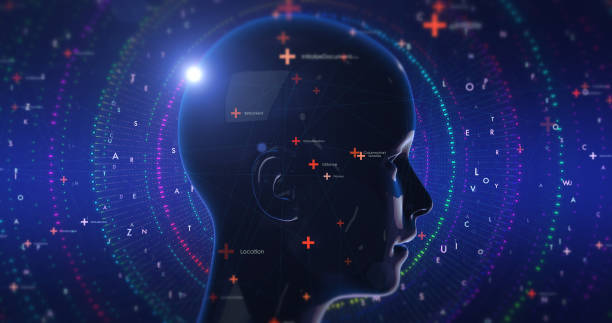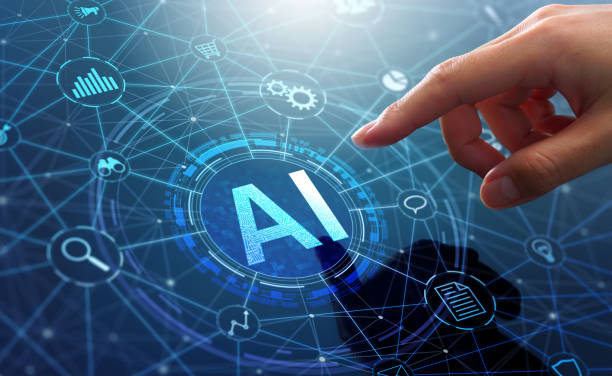### Understanding the Concept of Artificial Intelligence Robots and Their Applications
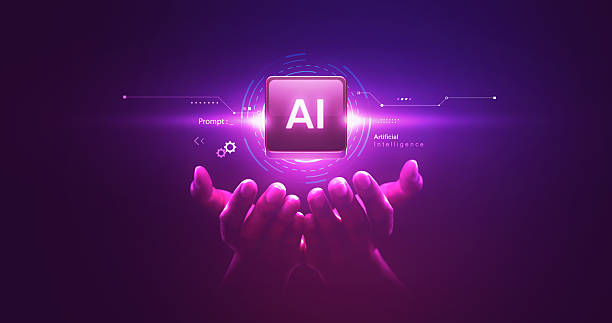
In today’s world, #ArtificialIntelligence (AI) is rapidly advancing, and intelligent robots, as one of the most important achievements in this field, play a significant role in our lives.
Artificial intelligence robots are essentially computer systems capable of performing tasks that typically require human intelligence.
These tasks include learning, problem-solving, decision-making, pattern recognition, and natural language understanding.
The applications of artificial intelligence robots are very broad and diverse, and they have had significant impacts across manufacturing, service industries, medicine, and education.
For example, in the manufacturing industry, intelligent robots can automate production processes, increasing production accuracy and speed.
In the field of medicine, these robots can assist doctors in diagnosing diseases and performing complex surgeries.
In education, intelligent robots can act as teaching assistants, helping students learn course materials.
Overall, artificial intelligence robots, as a powerful tool, can help improve the quality of human life and increase productivity in various industries.
With the ever-increasing advancement of technology, it is expected that the applications of these robots will become more extensive and complex in the future.
Does your company’s website create a professional and lasting first impression on potential customers? Rasaweb, with professional corporate website design, not only represents your brand’s credibility but also paves the way for your business growth.
✅ Create a powerful and reliable brand image
✅ Attract target customers and increase sales
⚡ Get a free consultation
Main Components of an Artificial Intelligence Robot
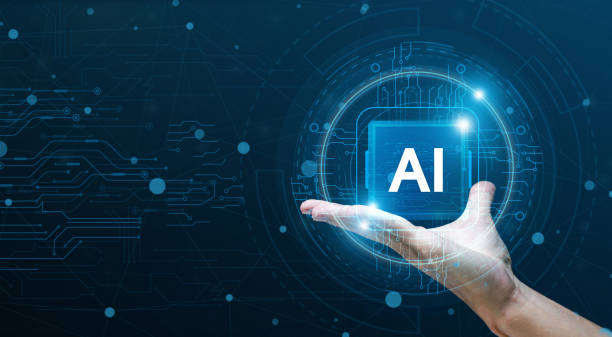
An artificial intelligence robot is composed of several main components, each playing a crucial role in the overall system’s performance.
These components include sensors, processors, actuators, and artificial intelligence algorithms.
Sensors are responsible for collecting data from the surrounding environment.
This data can include visual, auditory, tactile, or other types of sensory information.
Processors are responsible for processing the data collected by the sensors and executing the artificial intelligence algorithms.
Processors must be capable of performing complex calculations and processing large amounts of data in real-time.
Actuators are responsible for performing physical actions in the environment.
These actions can include movement, manipulation of objects, or the creation of sound and light.
Artificial intelligence algorithms are a set of instructions that allow the robot to perform its tasks.
These algorithms can include machine learning algorithms, planning algorithms, and control algorithms.
In summary, an artificial intelligence robot, as an integrated system, uses sensors, processors, actuators, and artificial intelligence algorithms to understand the environment, make decisions, and take appropriate actions in that environment.
Types of Artificial Intelligence Algorithms Used in Robots
![]()
Artificial intelligence algorithms play a vital role in the functioning of artificial intelligence robots, enabling them to perform complex tasks.
There are various types of artificial intelligence algorithms, each designed for specific applications.
Some of the most important of these algorithms include:
- Machine Learning These algorithms allow robots to learn from data and improve their performance.
Machine learning includes various types of algorithms such as supervised learning, unsupervised learning, and reinforcement learning. - Natural Language Processing These algorithms allow robots to understand and interact with human language.
Natural language processing includes techniques such as speech recognition, machine translation, and sentiment analysis. - Computer Vision These algorithms allow robots to understand images and videos and recognize objects and people.
Computer vision includes techniques such as facial recognition, object detection, and motion tracking. - Planning These algorithms allow robots to plan and take the necessary steps to achieve a specific goal.
Planning includes techniques such as search, optimization, and decision-making.
The selection of the appropriate algorithm for a specific artificial intelligence robot depends on the type of tasks the robot needs to perform and the type of data available.
With the ever-increasing advancement of technology, it is expected that more complex and powerful artificial intelligence algorithms will be developed, allowing artificial intelligence robots to perform even more complex tasks.
| Algorithm | Description | Applications |
|---|---|---|
| Machine Learning | Allows robots to learn from data | Pattern recognition, prediction |
| Natural Language Processing | Allows robots to understand human language | Chatbots, machine translation |
| Computer Vision | Allows robots to understand images | Facial recognition, self-driving |
Challenges and Limitations of Intelligent Robots

Despite the high potential of artificial intelligence robots, this technology also faces challenges and limitations.
One of the most important of these challenges is the issue of #security.
Intelligent robots can be targeted by cyber attacks, and hackers can take control of them and use them for malicious purposes.
Another issue is #privacy.
Intelligent robots can collect a large amount of data about users, and this data can be used for inappropriate purposes.
In addition, artificial intelligence robots still have limitations in some areas.
For example, robots still cannot understand and react to emotions as well as humans.
Also, robots still cannot be fully creative and come up with new ideas.
However, with the ever-increasing advancement of technology, it is expected that these challenges and limitations will be overcome, and artificial intelligence robots will be able to play a more important role in our lives.
It is necessary to pay special attention to security and privacy issues in the development and use of this technology.
Does your current company website reflect the credibility and power of your brand as it should? Or does it drive away potential customers?
Rasaweb, with years of experience in professional corporate website design, solves this challenge for you.✅ Increase the credibility and trust of visitors
✅ Attract more targeted customers
⚡ Click to get a free consultation!
The Future of Artificial Intelligence Robots

The future of artificial intelligence robots is very bright and full of new potential.
With the ever-increasing advancement of technology, it is expected that intelligent robots will play a more prominent role in our lives and contribute to improving the quality of human life in various fields such as healthcare, education, manufacturing, transportation, and customer service.
In the future, intelligent robots will be able to perform more complex tasks and interact with humans more naturally and effectively.
For example, surgical robots can perform more complex surgeries with greater accuracy and speed.
Teacher robots can help students learn course materials in a personalized way.
Worker robots can work in dangerous and difficult environments instead of humans.
Servant robots can help people with daily tasks.
However, it is necessary to pay special attention to ethical and social issues in the development and use of artificial intelligence robots.
It must be ensured that this technology is used for the benefit of all members of society and does not create discrimination and inequality.
Also, attention must be paid to the issue of employment and the impact of artificial intelligence robots on the labor market.
The Impact of Artificial Intelligence Robots on Various Industries

Artificial intelligence robots have had profound impacts on various industries, causing significant transformations in processes and productivity.
In the #manufacturing industry, intelligent robots can automate production processes, increasing production accuracy and speed.
This leads to reduced costs, increased product quality, and improved company competitiveness.
In the field of #healthcare, intelligent robots can assist doctors in diagnosing diseases, performing complex surgeries, and providing medical care to patients.
This leads to improved diagnostic accuracy, reduced medical errors, and increased quality of medical care.
In the #transportation industry, intelligent robots can control self-driving cars and manage intelligent transportation systems.
This leads to reduced accidents, reduced traffic, and improved efficiency of transportation systems.
In the field of #customer_service, intelligent robots can act as chatbots to answer customer questions and solve their problems.
This leads to improved customer satisfaction, reduced customer service costs, and increased company productivity.
Overall, artificial intelligence robots have had positive impacts on various industries by automating processes, increasing accuracy and speed, reducing costs, and improving quality, and it is expected that these impacts will become more widespread and profound in the future.
How to Build a Simple Artificial Intelligence Robot
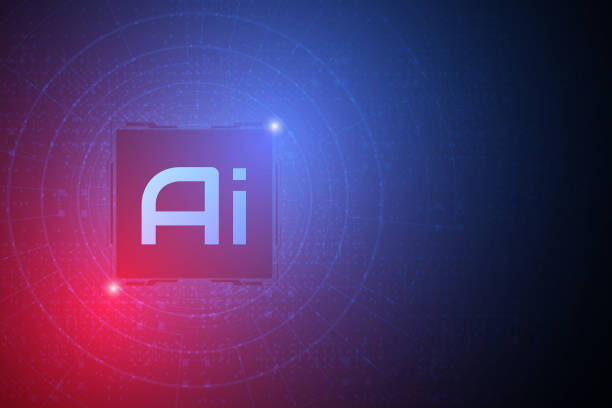
Building a simple artificial intelligence robot can be an engaging and informative project.
To get started, you will need a hardware platform such as Arduino or Raspberry Pi, sensors, actuators, and a programming environment.
First, you need to connect the sensors to the hardware platform and process the data collected by them.
Then, you need to implement artificial intelligence algorithms and teach the robot to perform the desired tasks.
For example, you can build a simple artificial intelligence robot that is able to recognize colors and move towards the desired color.
For this, you will need a color sensor, two DC motors, and an Arduino board.
First, you need to connect the color sensor to the Arduino board and write the necessary code to read the color values from the sensor.
Then, you need to connect the motors to the Arduino board and write the necessary code to control the speed and direction of rotation of the motors.
Finally, you need to implement the artificial intelligence algorithms and teach the robot to recognize the desired color and move towards it.
You can do this using a simple algorithm such as the PID algorithm.
By completing these steps, you will have a simple artificial intelligence robot that is able to recognize colors and move towards the desired color.
This project can be a starting point for learning more about artificial intelligence robots and building more complex robots.
| Step | Description | Required Tools |
|---|---|---|
| 1 | Choosing a Hardware Platform | Arduino, Raspberry Pi |
| 2 | Connecting Sensors | Color sensor, Wire |
| 3 | Implementing the Algorithm | Programming environment |
Ethical Issues in the Development and Use of Artificial Intelligence Robots
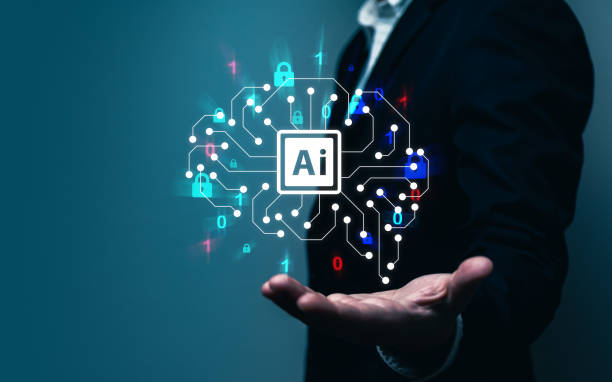
The development and use of artificial intelligence robots raises important ethical issues that need to be addressed.
One of these issues is #accountability.
If an artificial intelligence robot makes a mistake and causes damage, who will be responsible? Will the robot’s manufacturer, the robot’s user, or the robot itself be responsible? Another issue is #transparency.
Artificial intelligence algorithms can be very complex and difficult for humans to understand how they work.
This can lead to distrust and concern about the misuse of this technology.
The third issue is #discrimination.
Artificial intelligence algorithms can be trained based on historical data, and if this data contains bias, the robots may also act in a discriminatory manner.
To solve these ethical issues, it is necessary to observe ethical principles in the development and use of artificial intelligence robots and ensure transparency, accountability, and non-discrimination.
Also, attention should be paid to the issue of education and raising public awareness about this technology so that people can make informed decisions about its use.
Does your current site reflect your brand’s credibility as it should? Or does it scare away potential customers?
Rasaweb, with years of experience in designing professional corporate websites, is your comprehensive solution.
✅ A modern, beautiful site that matches your brand identity
✅ Significant increase in lead capture and new customers
⚡ Contact Rasaweb now for a free corporate website design consultation!
Important Points in Choosing an Artificial Intelligence Robot

Choosing a suitable artificial intelligence robot depends on your needs and goals.
Before buying a robot, you should carefully examine your needs and specify what you want to use the robot for.
Also, you should pay attention to your budget and choose a robot that is compatible with your budget.
The price of artificial intelligence robots can vary greatly and depends on various factors such as the type of robot, its capabilities, and the manufacturer’s brand.
In addition, you should pay attention to the robot’s capabilities and choose a robot that has the capabilities you need.
For example, if you want to use the robot for complex tasks, you should choose a robot that has a powerful processor, sufficient memory, and advanced algorithms.
Finally, you should pay attention to the manufacturer’s brand and choose a robot that is manufactured by a reputable and well-known brand.
Reputable brands usually offer better quality robots with better support.
By following these tips, you can choose a suitable artificial intelligence robot for your needs and benefit from the advantages of this technology.
Artificial Intelligence Robots and Their Impact on the Future of Jobs

Artificial intelligence robots are changing the shape of the labor market and will have profound impacts on the future of jobs.
Some jobs are at risk of being eliminated due to automation and self-automation, while new jobs will also be created that require new skills.
Jobs that are repetitive, routine, and rule-based are at the highest risk of automation.
These jobs include office jobs, manufacturing jobs, and service jobs.
In contrast, jobs that require creativity, problem-solving, critical thinking, and social skills are less at risk of automation.
These jobs include management jobs, engineering jobs, medical jobs, and artistic jobs.
To prepare for the future of the labor market, it is necessary for people to update their skills and learn new skills that are compatible with new technologies.
These skills include technical skills, analytical skills, problem-solving skills, and communication skills.
Governments and organizations should also provide training and support programs to help people learn new skills and transition to new jobs.
With these measures, the negative impacts of artificial intelligence robots on the labor market can be reduced, and the benefits of this technology can be utilized.
With the increasing advancement of artificial intelligence robots, we must prepare ourselves for the future.
FAQ
| Row | Question | Answer |
|---|---|---|
| 1 | What is an artificial intelligence robot? | An artificial intelligence robot is a machine capable of understanding, reasoning, learning, and solving problems, and can perform complex tasks with relative autonomy. |
| 2 | What are the most important applications of artificial intelligence robots? | The main applications include industrial production, customer service (chatbots), medicine and surgery, self-driving transportation, space exploration, and military affairs. |
| 3 | What is the main difference between an artificial intelligence robot and a regular robot? | A regular robot only follows programmed instructions, while an artificial intelligence robot can learn from data, make decisions, and adapt to new environments. |
| 4 | How do artificial intelligence robots learn? | They learn through machine learning algorithms (such as deep learning, reinforcement learning) and processing vast amounts of data, identifying patterns, and improving their performance. |
| 5 | Can artificial intelligence robots have emotions? | Currently, artificial intelligence robots do not have real emotions in the human sense. They can mimic or recognize emotions, but they do not understand and experience them. |
| 6 | What are the current limitations of artificial intelligence robots? | Limitations include the need for large amounts of data, the inability to understand abstract concepts, the lack of real creativity, ethical issues, and the challenges of generalizability in new environments. |
| 7 | What is the role of artificial intelligence in the development of Humanoid robots? | Artificial intelligence helps Humanoid robots walk, maintain their balance, understand their surroundings, interact with humans, and perform complex tasks. |
| 8 | How is the future of artificial intelligence robots predicted? | It is predicted that artificial intelligence robots will become smarter, more autonomous, and capable of performing more complex tasks in everyday life and industry, and their interaction with humans will increase. |
| 9 | Can artificial intelligence robots replace all human jobs? | It is unlikely that all human jobs will be replaced. Robots take over many repetitive and dangerous tasks, but jobs that require creativity, empathy, and moral judgment will remain. |
| 10 | What ethical and social challenges arise with the expansion of artificial intelligence robots? | Challenges include issues related to privacy, data security, ethical decision-making by robots, impact on employment, and accountability in case of errors. |
And other services of Rasa Web Advertising Agency in the field of advertising
Intelligent Digital Advertising: Transform digital branding with the help of precise audience targeting.
Intelligent Conversion Rate Optimization: A fast and efficient solution for managing campaigns with a focus on attractive user interface design.
Intelligent Direct Marketing: Designed for businesses looking for digital branding through optimization of key pages.
Intelligent Sales Automation: A novel service to increase click-through rates through Google Ads management.
Intelligent Reporting: A combination of creativity and technology for digital branding through intelligent data analysis.
And more than hundreds of other services in the field of internet advertising, advertising consulting and organizational solutions
Internet Advertising | Advertising Strategy | Ad Reporting
Sources
PDF Introduction to Artificial Intelligence
, What are the applications of intelligent robots in everyday life?
, What is Artificial Intelligence? What are its applications?
, Types of Artificial Intelligence; Classification, Applications and Benefits
? Rasaweb Afarin, your strategic partner in the digital world. From search engine optimization to multilingual website design and content marketing, we guarantee the growth and visibility of your business.
📍 Tehran, Mirdamad Street, next to the Central Bank, Southern Kazerun Alley, Ramin Alley No. 6

